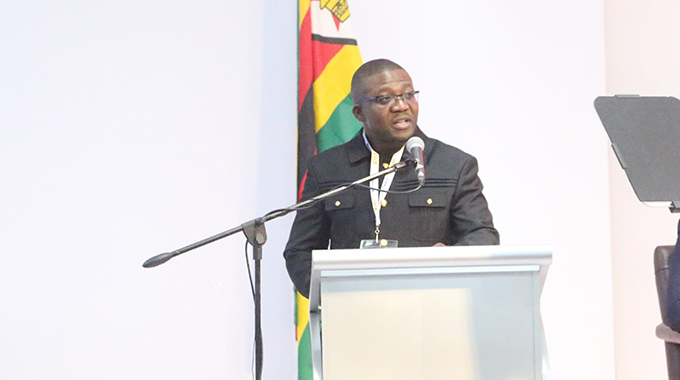Sustainable waste management programmes

WASTE management is one of the most topical environmental issues in Zimbabwe’s urban centres, growth points as well as rural service centres.
Most cities, towns and growth points are characterised by litter and illegal solid waste dumps on street corners and along sanitary lanes. According to Practical Action Southern Africa (2006), more than 2.5 million tonnes of household and industrial waste are produced per annum in urban areas across Zimbabwe.
Drivers to the waste management challenge
Rapid urbanisation leading to high urban population densities, sprouting illegal settlements, expansion of residential and industrial areas as well as changing consumption patterns had led to a dramatic increase in urban solid waste generation, with corresponding increases in challenges for planning and designing for solid waste management systems for urban areas.
Increased packaging of consumer goods has not only increased the quantities of waste but also the varieties of waste generated, further complicating the problem for urban local authorities.
Can this challenge be tackled sustainably?
Sustainable waste management can be defined as “Using material resources efficiently to cut down on the amount of waste produced, where waste is generated, dealing with it in a way that actively contributes to the economic, social and environmental goals of sustainable development.”
This can be achieved through different waste management options, such as; prevention, minimisation, reuse, recycling, energy recovery, incineration and finally disposal in a properly lined landfill.
The sustainable management of waste however calls for an integrated approach, where everyone participates and takes corrective action to reverse this unpleasant situation.
Stakeholder participation therefore becomes key in resolving this anomaly that has greatly reduced the aesthetic value of our once beautiful towns and cities.
Who are the stakeholders
A stakeholder is any organisation, governmental entity, or individual that has a stake in or may be impacted by a given approach to environmental regulation, pollution prevention, energy conservation among others, for instance; corporates, vendors, residents, churches, schools and tertiary institutions and Local Authorities.
The Agency’s vision of “a safe, clean and healthy environment supporting an empowered society and a growing economy” can be achieved with stakeholder participation.
Role of Stakeholders in waste management
Retailers
– Adopt the “cradle to the grave principle”, which refers to the responsibility a company takes for the entire life cycle of a product, service or programme, from design to disposal or termination.
– Put a bin in front of your shop.
– Organise yourselves into groups and adopt zones for clean-up.
– Clean up your frontage up to the road and back corridors and sanitary lanes.
– Donate branded bins to Local Authorities as a way of advertising as well assist in the provision of bins.
– Appoint anti-litter monitors for your shopping areas.
– Organise regular clean ups to keep shopping centres clean and attractive to customers.
– Set up cages to collect recyclable cans, bottles, plastic bottles etc.
– Food outlets should sell their food leftovers to piggeries or individuals with pets.
– “Adopt” a street in your city/town and maintain it on a regular basis.
Residents
– Form community based organisations (CBOs) and regularly clean up residential frontage, backyards and streets in your area.
– Appoint anti-litter monitors in your areas.
– Establish environment committees and clean up the wards.
– Separate your waste into biodegradable, plastic bottles (PEPs) and metal cans.
– Compost all material that is biodegradable and that rots. Use the manure for your vegetable gardens.
– Avoid burning waste, the fumes cause cancer.
– Avoid dumping of waste.
Schools, Colleges &Universities
Academic institutions should mainstream environmental education into their learning curriculum.
In addition, EMA runs competitions for the youth in schools such as the High Schools environmental debate competition and the Sisonke/ Tavatose Art exhibition.
This year, both competitions are focusing on waste management with the following topics;
Debate: “Environmental prosecution and not environmental education is the best way to deal with poor waste management practices in Zimbabwe. Discuss”.
Sisonke/ Tavatose Art Exhibition: “Waste no waste, waste is treasure”. Closing date for submitting the Art works to the National Art Gallery is 24 June 2016.
Furthermore, the centres of learning can do the following;
– Form environmental groups to spearhead clean-up of institutional frontage and roads leading to these institutions and back corridors and sanitary lanes.
– Adopt areas/zones for clean-up and enhance the school and the community relationships.
– Set up cages to collect plastics, glass, cans for pupils.
– Collect recyclables at home and bring to school on a set day.
Churches
– The church can identify litter monitors at congregational level who would assist in the coordination and management of waste management activities at church and community level.
These monitors should be trained in partnership with organisations such as EMA, Environment Africa and Local Authorities among others.
– As part of empowering communities churches should source and keep clean up materials which would be used during clean up campaigns and other environmental educational awareness programmes.
– Churches should develop waste management plans which act as a guide on what they should do with regards to the management of waste.
– When hosting national and international events churches should ensure they procure enough waste receptacles to be able to sustainably manage their waste.
– In areas of their operation churches should spearhead formation of waste management committees as a way of building a multi-stakeholder approach in addressing waste management challenges in a given area.
Local Authorities
– Each Local Authority is encouraged to tailor make and develop their own system that is in tandem with their waste scenario and available stakeholders.
– Communication and education become the principal components of a good plan that is likely to be successful.
– The waste Management plan should provide for mechanisms, systems and procedures for giving effect to every stakeholder’s obligations in terms of legal frameworks, local people’s norms and standards of proper waste management; i.e. planning, and service delivery.
– Local Authorities are requested by law to establish Environment Committees and sub Committees to assist in all management of their environment.
– Every Local Authority should have a properly lined landfill where waste is disposed of.
We are in the fire season. Do not start veld fires!
Environmental Facts, Tips and Updates are published weekly by the Environmental Management Agency. Send your feedback to; [email protected], like us on facebook and twitter or visit our website www.ema.co.zw <http://www.ema.co.zw>. Alternatively, call us on: Tel 04-305543 and Toll-free 08080028; or use our Whatsapp platform 0779565707. We are ready to listen.












Comments